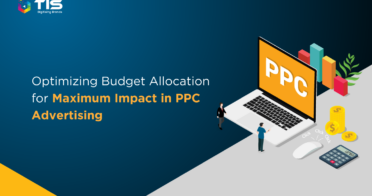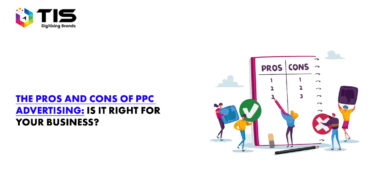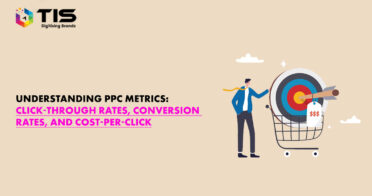





 Apr 10, 2023
Apr 10, 2023

Optimizing your PPC campaigns for mobile users on Instagram and Facebook is crucial in today’s digital landscape due to the increasing use of mobile devices. Mobile devices are becoming the preferred way for people to access the internet and consume content, which means that businesses need to ensure that their PPC campaigns are optimized for mobile users to achieve maximum results.
Creating mobile-friendly ads that are optimized for mobile devices has become crucial for businesses due to the popularity of smartphones and tablets. Mobile devices are becoming more popular than desktop computers for accessing the internet and consuming content. Ads that are specifically designed for mobile screens have become a necessity because of this change in behavior.
It’s essential to keep in mind that mobile screens are smaller than desktop screens when creating mobile ads. So, the ad copy should be short and straightforward, so the viewer can understand the message quickly. Complex sentences can be hard to read and may discourage viewers from watching your ad.
It’s also important to use high-quality images to make mobile ads. When there’s limited space on mobile screens, a visually appealing image can grab the viewer’s attention. Images that are relevant to the ad’s message can help convey the message better.
It’s also important to use readable fonts when creating mobile ads. It’s hard for viewers to engage with ads that have small fonts or are hard to read. Therefore, it’s recommended to use large, easy-to-read fonts that are optimized for mobile devices.
Basically, a landing page is a standalone webpage designed to get visitors to convert into leads or customers by getting them to fill out a form or make a purchase. User experiences are seamless across desktops, laptops, tablets, and smartphones with responsive landing pages.
Responsive landing pages make sure that the content displays properly on any device, regardless of the screen sizee adjust dynamically based on the screen size, making it easy for users to navigate and interact with the page. This results in a better user experience, which can increase engagement and conversions.
Because more and more people use their mobile phones to browse the internet, responsive landing pages are crucial. Mobile user have different browsing habits and expectations than desktop users, so make sure your landing pages are optimized for them.
Finally, it’s important to make sure that your landing pages load quickly on mobile devices since users are more likely to abandon a page that takes too long to load. Slow loading times can result in a poor user experience, which can hurt your conversion rates and online reputation.
In today’s mobile-driven world, Instagram and Facebook stories are becoming an increasingly popular and effective way to reach out to potential customers. Stories are a type of short-form content that appear at the top of a user’s news feed and last for just 24 hours before disappearing. They can be either full-screen vertical videos or images and are designed to be consumed quickly and easily.
Leveraging Instagram and Facebook stories for advertising is a great way to get the attention of mobile user who are already scrolling through their feeds. Make your ads more engaging, visually appealing, and attention-grabbing by designing them specifically for stories. This is because stories are immersive, meaning that users are more likely to be fully engaged with the content they are viewing.
To create effective ads for stories, you should ensure that they are short, visually appealing, and attention-grabbing. Since users are scrolling quickly through their feeds, your ads should catch their eye immediately and be able to convey your message in just a few seconds. This means that you should use eye-catching images or videos, use clear and concise messaging, and use branding that is consistent with your overall marketing strategy.
PPC (Pay Per Click) campaigns need CTAs (Call-to-Actions) because they encourage users to do something, like make a purchase or click a link. CTAs get users to take action and increase their chances of becoming customers.
To ensure that CTAs are effective, they need to be prominently displayed in your ads and landing pages. This means placing them in a visible location, using a clear and legible font, and using contrasting colors that make them stand out.
You should also use actionable language in your CTAs. Actionable language is language that prompts the user to take action, like “Buy now,” “Learn more,” “Sign up,” or “Download now.” These CTAs let users know what they have to do to convert.
For mobile users, it’s important to use CTAs that are specifically designed for mobile devices. This includes using language that is optimized for mobile, such as “Swipe up” or “Tap to learn more.” These CTAs are more likely to encourage mobile users to take action, as they are easy to use and intuitive.
Monitoring the performance of a Pay-Per-Click (PPC) campaign is important, since advertisers pay each time a user clicks on their ad. Regularly tracking the performance of a PPC campaign is essential for success.
It’s important to analyze data to figure out which ads and landing pages are doing well and which need improvement when monitoring your PPC campaign. Your campaign can be optimized by identifying any weaknesses and making necessary changes.
Moreover, monitoring campaign performance enables you to ensure that you are targeting the right audience and that your budget is being spent effectively. For instance, you may notice that certain keywords or ads are driving more traffic or conversions than others, and you can adjust your strategy accordingly.
In conclusion, optimizing PPC campaigns for mobile users on Instagram and Facebook is essential in today’s digital landscape, where mobile devices are becoming the preferred way for people to access the internet and consume content. To achieve maximum results, businesses need to create mobile-friendly ads, use responsive landing pages, leverage Instagram and Facebook stories, use effective CTAs, and monitor the campaign’s performance regularly. By following these strategies, businesses can increase engagement, conversions, and overall campaign success on mobile devices.

In the dynamic realm of pay-per-click (PPC) advertising, the key to success doesn’t solely lie in the magnitude of your expenditures; it rests on the shrewd distribution of those funds to yield optimal outcomes. With the application of adept strategies, your budget can be stretched to its utmost potential,...
Read More

Overview of PPC Advertising PPC (Pay-Per-Click) advertising is an online advertising model where advertisers pay a fee each time their ad is clicked. It involves bidding on keywords and displaying ads in search engine results or on relevant websites. When a user clicks on the ad, the advertiser is...
Read More

Introduction: Pay-per-click (PPC) advertising is a powerful digital marketing strategy that requires a thorough understanding and analysis of key metrics to evaluate the effectiveness of your campaigns. This article focuses on three crucial metrics in PPC advertising: click-through rates (CTR), conversion rates, and cost-per-click (CPC). By gaining a comprehensive...
Read More